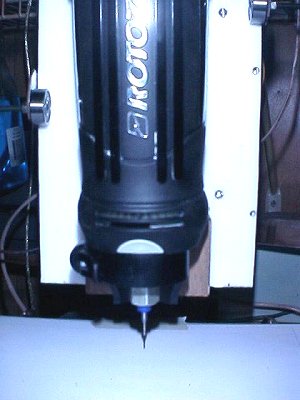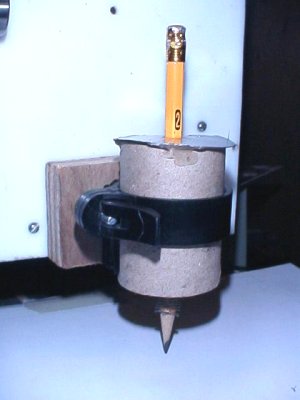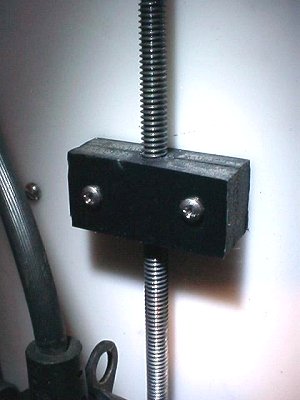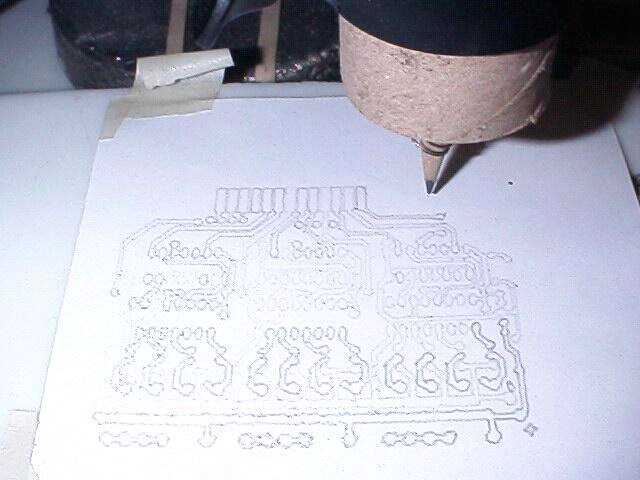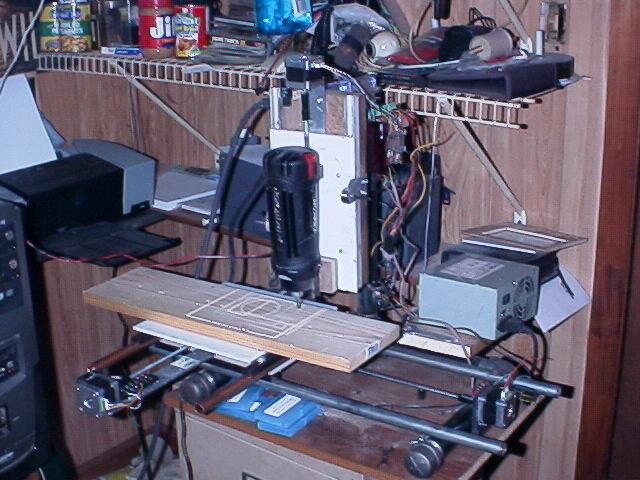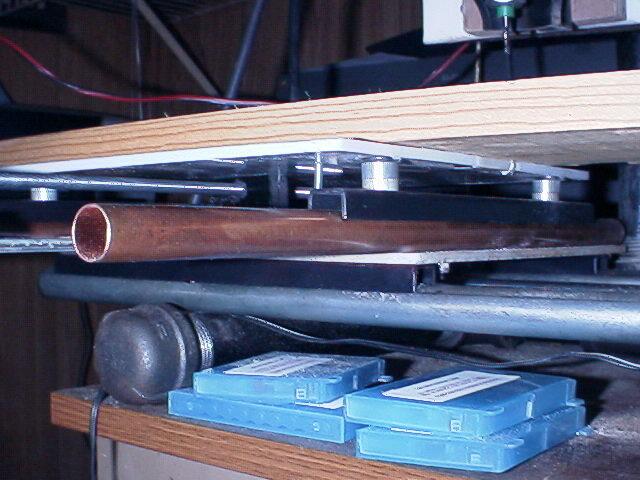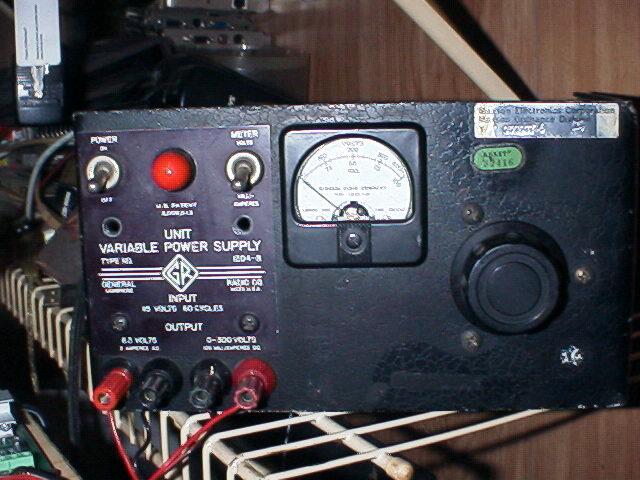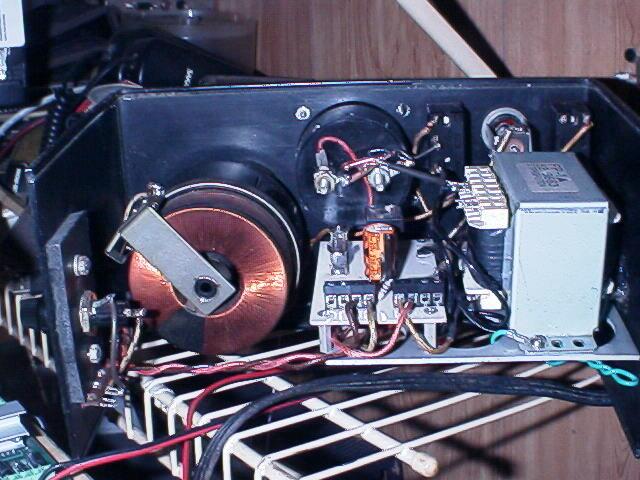
This was my first Z-stage build. To the left of the motor is a limit switch. The lower mount came with my Rotozip.
I didn't try to use marble bearings in a vertical channel because it just sounded like trouble. Instead, I used steel conduit sliding in the steel channel. Since it was hanging vertically, friction was mainly a function of the tightness of the two roller bearings holding the table.
Unfortunately, it turned out that routing the copper off of circuit boards created enough sideways pressure that, unless the table was held very firmly, there would be an unacceptable amount of play.
When the bearings were very tight, the friction would be high and the Z precision suffered. When you are routing both sides of something the thickness of a circuit board, there is no room for Z axis error.
That was the un-doing of this design and I have since come up with a better way which I will show when I get some pictures.
